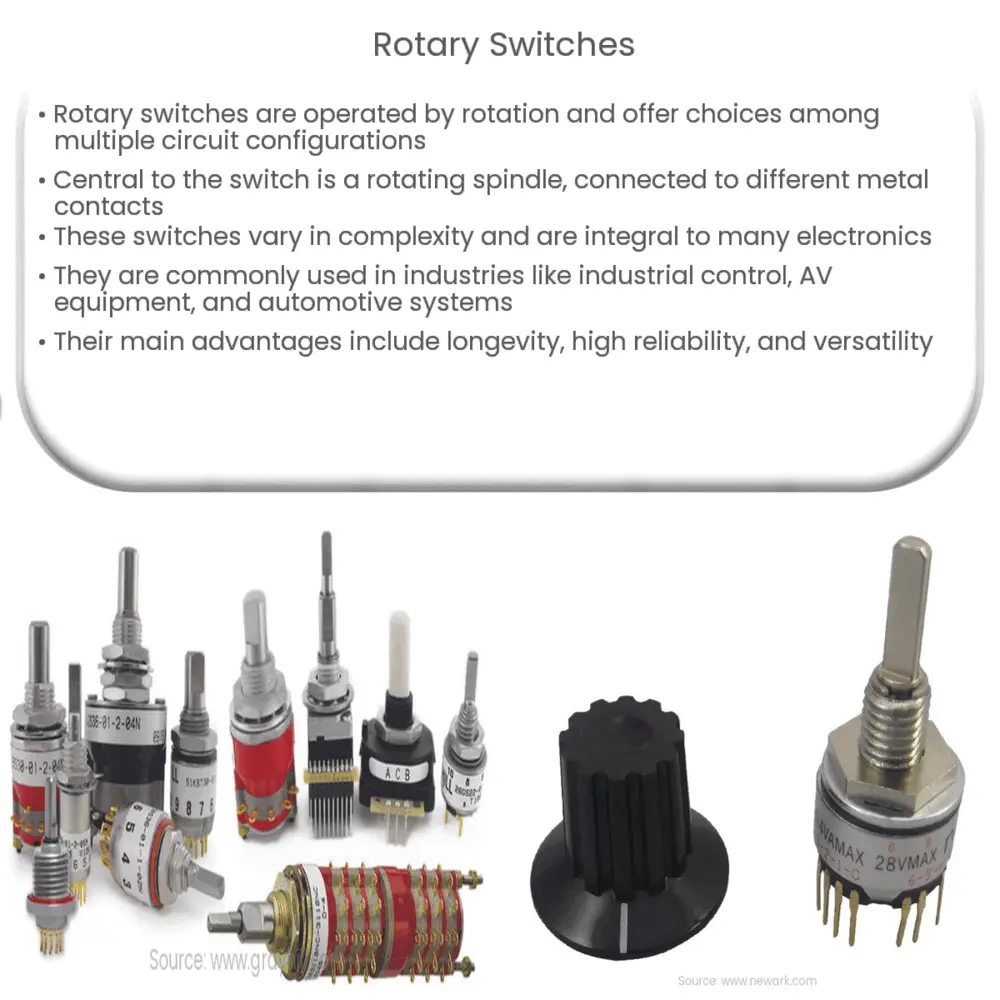Explore the intricacies of rotary switches, their types, advantages, and applications across industries. Learn how they’ve evolved over time.

Understanding Rotary Switches
A rotary switch is a type of switch operated by rotation. These are commonly used where more than two positions are needed, such as in a multi-speed fan or a radio with multiple frequencies.
Functionality
Typically, a rotary switch allows the user to choose among a series of options. Each position corresponds to a certain circuit configuration that enables a particular device function. When the user rotates the switch, it selects or activates different circuits within the device.
Structure of a Rotary Switch
-
The main component of a rotary switch is the spindle or rotor. It is the central shaft that rotates within the switch body, allowing the user to select different positions.
-
Attached to the rotor are different metal contacts. Each position of the rotor corresponds to a different set of these contacts being connected.
-
The exterior part of the switch often consists of a knob or dial that the user turns to manipulate the rotor.
Types of Rotary Switches
Rotary switches come in different types based on the number of positions and the number of channels (also known as poles) they have. Here are a few common types:
-
Single Pole, Multiple Position: This switch type has one channel or pole and multiple positions. The single pole can connect to any one of the several positions at a time.
-
Multiple Pole, Multiple Position: This type of switch has multiple channels and can select multiple circuit paths simultaneously. Each pole can be switched to the same or a different position, depending on the specific configuration.
As we can see, the functionality and complexity of rotary switches make them an integral part of many electronic devices. In the next section, we will delve into the applications and advantages of these switches, and how they have evolved over time.
Applications of Rotary Switches
Rotary switches are widely used in various industries due to their versatile nature and ability to control multiple functions. Some common applications include:
-
Industrial Control Systems: Rotary switches are commonly used in industrial machinery to control different modes of operation. They are also used in safety systems to ensure correct operation sequences.
-
Audio and Visual Equipment: Many types of AV equipment like amplifiers, mixers, and radios use rotary switches to select inputs, control volume, and adjust other settings.
-
Automotive Systems: In vehicles, rotary switches are often used in climate control systems, ignition switches, and selecting driving modes.
Advantages of Rotary Switches
Rotary switches offer several key advantages that make them suitable for these and many other applications:
-
Long Life Span: Due to their robust structure, rotary switches typically have a long life span, even under frequent use.
-
High Reliability: Rotary switches are highly reliable, with less chance of accidental actuation compared to other types of switches.
-
Versatility: They offer great versatility, with the ability to manage multiple circuits from a single switch.
The Evolution of Rotary Switches
Over time, rotary switches have seen significant advancements in design and functionality. Modern rotary switches can handle complex switching operations, integrating seamlessly with digital interfaces and software control systems. The latest designs include features like LED indicators, push-button actuation, and programmable positions to improve usability and precision.
Conclusion
In conclusion, rotary switches, with their unique blend of versatility, reliability, and durability, play a crucial role in electronic devices across various industries. They embody a simple yet powerful solution for multi-functional control. With continued innovation and integration with digital technologies, the potential applications and utility of rotary switches are set to expand even further in the future.



